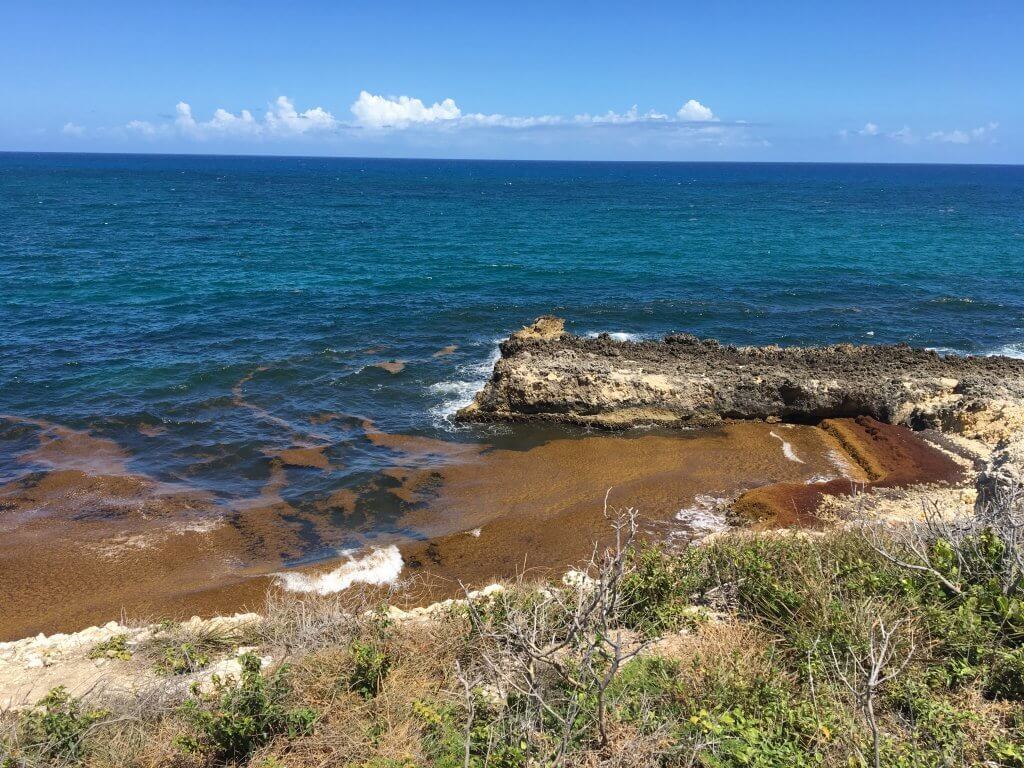Sometimes you go to a beach in the Caribbean and it’s covered in seaweed, the dreaded Sargassum. It’s not so bad really, it is a very natural occurrence after all. Unless it’s 3 feet deep and 10 feet wide, and starting to really stink. It happens, and you don’t just find seaweed on Vieques beaches, it can be all over the region. There is actually an area in the Atlantic Ocean named the Sargasso Sea by 15th century Portuguese sailors. It is bordered by several ocean currents that help corral the floating weed in that area, although obviously a lot of it also escapes.
You pull up to the beach with chairs, cooler, umbrella, and all sorts of beach toys, only to find the beautiful blue water doesn’t meet fine white sand as you’d expected. Oh no, instead the water meets a large brown swath of seaweed. It doesn’t help that this has been going on since the beginning of time, you want your beach day, and so do we!

On occasion there could be a different surprise, like rough waves when you wanted to chill in the water, or cloudy water when you wanted to snorkel. Sometimes we’ll even get largish swaths of turtle grass in the water which has been pulled up from the bottom by storms and clumped together near the shoreline.
Our rule for beaching it in Vieques is to always have a Plan B, a contingency in case one of these situations pops up. Plan C isn’t a bad idea either, or as many options as you can think of. That’s what the Vieques Beach Map is all about – to give you options. And that’s one thing that is so great about Vieques – the sheer number of options.
One of your primary options ought to be on the opposite side of the island, because if there’s seaweed on one side, it’s highly unlikely to be on the other side. And if one side is cloudy, often clear water may be found on the other side of the island as well.
This is because of the tradewinds, which blow east to west almost all year, but it’s not always straight out of the east. In the summer, they are usually from the southeast, and in the winter, often they come from the northeast. These aren’t big swings, but they are enough to deposit seaweed, or take it away on the tide, depending on where you happen to be that day.
Note also that a few beaches are famous for collecting seaweed because they face more straight into those tradewinds. Playuela is one example, as are the highest and lowest numbers at La Chiva. But, at the far west end of Vieques is Puntas Arenas which is protected by the island itself. It almost never has sargassum weed, so always keep that one in your list of options.


